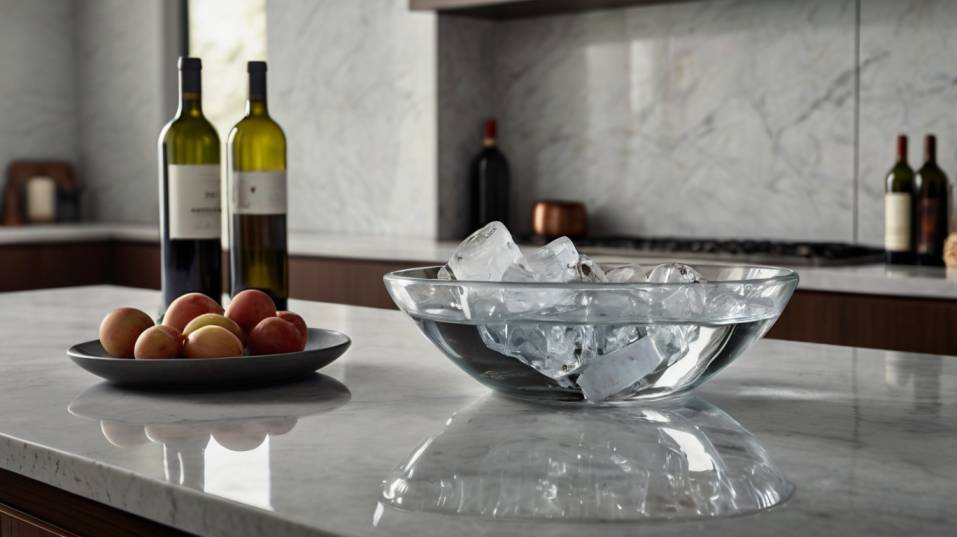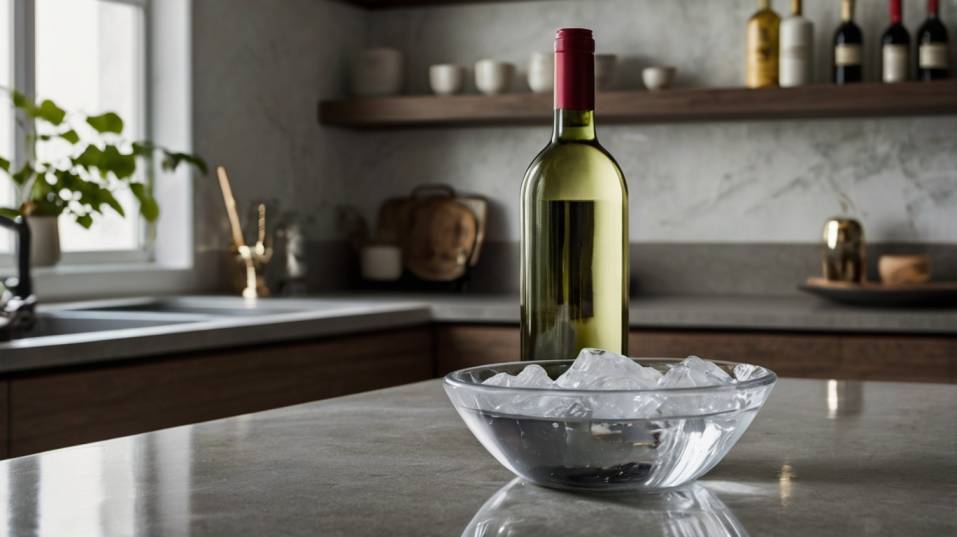How to Chill Wine Properly (Without a Wine Fridge)
Chill wine like a pro—no fridge needed. Learn simple, smart methods to serve wine at its best and unlock more flavor in every glass.

Ever opened a bottle of wine, took a sip, and thought—meh? It might not be the wine. It might be the temperature. The right chill can elevate even a basic bottle, making it taste brighter, smoother, more alive.
But do you need a wine fridge? Not even close. With a few smart tricks, you can dial in the perfect temperature using what you already have at home—and unlock way more from every pour.
Why Temperature Matters More Than You Think
Wine is alive in the glass. Temperature shapes how you experience everything—aroma, texture, flavor, even the finish. Warm it slightly, and a wine might feel more generous.
Cool it down, and the structure tightens, the acidity lifts, and certain aromas recede while others come forward.
There’s no one perfect temperature for every bottle, but understanding the range helps you hit that sweet spot where a wine is balanced, expressive, and pleasurable.
Aromatic whites like Sauvignon Blanc or Riesling tend to shine between 45–50°F, where their floral and citrus notes pop without being muted.
Fuller-bodied whites like Chardonnay can handle a little more warmth—closer to 50–55°F—so their creamy texture and subtle oak tones come through. Rosés sit comfortably between 45–55°F, depending on style.
Sparkling wines are typically best between 40–45°F, where the bubbles feel tight and crisp. And red wines? They’re more varied.
Light reds like Gamay or Pinot Noir benefit from a slight chill—about 55°F—while fuller reds like Syrah or Cabernet Sauvignon do best around 60–65°F, a far cry from the average room temperature.
When you understand these general zones, you stop treating wine like a static object. It becomes something you guide—something you can dial in.

Ice Bath: Fast, Reliable, and Surprisingly Precise
You’ve probably heard of it, maybe even tried it, but the ice bath isn’t just a party hack—it’s one of the most controlled and efficient ways to chill wine on demand.
Fill a deep bowl, bucket, or even your sink with equal parts ice and water. Add a handful of kosher salt if you have it.
The salt lowers the freezing point of water, allowing the cold to transfer more quickly and evenly along the surface of the bottle.
Submerge the wine completely up to the neck, and give the bottle a slow spin every few minutes. Within 10 to 15 minutes, whites and rosés will be in their ideal zone.
Sparkling wines might take closer to 20. Light reds become more vivid after just 5–10 minutes in the bath, especially if they’ve been sitting at room temperature.
This method isn’t just fast—it’s consistent. Unlike the freezer, which cools unevenly and carries the risk of overchilling (or forgetting the bottle entirely), an ice bath gives you tactile feedback. You can feel the change and adjust accordingly.
The Regular Fridge: Underestimated, But Useful
Your refrigerator may not be a precision instrument, but it’s reliable. The average fridge runs around 35–38°F, which is colder than ideal for most wines, but that’s not a problem if you’re using it strategically.
A room-temperature white can chill to serving temperature in about 2 hours. For red wines that feel too warm or soft, 15–30 minutes in the fridge often restores the right amount of lift and clarity.
One of the smartest habits you can build is pulling a bottle from the fridge before serving—about 15 minutes for whites and 20 for sparkling wines.
As it warms slightly in the glass, the flavors evolve. It’s a good reminder that wine is not static; it moves, breathes, and unfolds.
And if you open a bottle and realize it's not quite where it should be, don't hesitate to adjust. Put it back in the fridge for a bit. Or pour a glass and let it sit. You’ll notice how quickly your perception shifts as the wine reaches its proper zone.
The Touch Test: Trust Your Senses
You don’t need thermometers or apps to get this right. Your hands and taste buds are more intuitive than you think. Touch the bottle—does it feel cold to the touch but not icy?
That’s a good indicator for whites and rosés. Does it feel just cool, like a wine cellar? That’s the zone for most reds. Once poured, use your palate.
If the wine seems dull or closed off, it might be too cold. If it feels loose, sweet, or hot, it’s probably too warm.
With repetition, these cues become second nature. You’ll start to anticipate how a certain wine behaves at different temperatures and adjust before you even pour.
This attention to detail isn’t about fussy wine behavior—it’s about respect. For the wine, yes, but also for your own experience.
Chilling Red Wine: A Subtle, Essential Upgrade
The old guideline to serve red wine at "room temperature" comes from another era—specifically, 18th-century European stone buildings.
Today’s rooms are often 70°F or warmer, especially in summer. At that temperature, even well-structured reds can taste soupy, overly alcoholic, and unfocused.
Chilling a red—even briefly—restores tension, acidity, and balance. That slight drop in temperature sharpens tannins and reveals more precise fruit notes.
Try it with Beaujolais, Grenache, or even a California Pinot Noir. Start with 10–15 minutes in the fridge or an ice bath. You’ll notice the difference immediately: a wine that feels composed, rather than slack.
Even bolder reds like Zinfandel or Syrah can benefit from a 10-minute chill. The goal isn’t to make them cold, but to pull them out of the heat slump where flavors blur.
This approach gives you more control, especially when serving red wine with food. A slightly cooler red can cut through richness more effectively and feel more refreshing on the palate.
Timing and Planning: A Small Shift, a Big Reward
Chilling wine properly doesn’t require equipment—it requires timing. If you know what you’re opening, you can prep with a short stint in the fridge or an ice bath.
Keep a few whites and rosés in the fridge at all times, and treat the freezer or ice bath as your fine-tuning tools.
More importantly, stay flexible. If a wine tastes a little tight, let it breathe and warm up. If it’s flabby, give it a quick chill. Don’t just follow temperature rules—follow the wine. It’ll tell you where it wants to go.
The more you practice, the more you build a mental map: which varietals show best with a slight chill, which styles feel best a little warmer.
This kind of awareness builds confidence. You stop drinking wine passively and start engaging with it, adjusting it, refining it.
That’s when wine becomes more than a beverage. It becomes part of a ritual—deliberate, rewarding, and entirely yours.
Final Thoughts
Serving wine at the right temperature is one of the simplest, most powerful ways to improve your tasting experience—and it costs nothing but attention.
Use your fridge for planning, your ice bath for quick corrections, and your senses for everything in between. Feel the bottle. Taste the shift. Trust what the wine is telling you.
Tonight, take a bottle—any bottle—and try chilling it differently. Taste it in stages. Find the moment where it opens, speaks, and feels alive in the glass. That’s your new benchmark.
No wine fridge required. Just intention, curiosity, and the willingness to meet your wine where it’s at—so it can meet you where you are.




